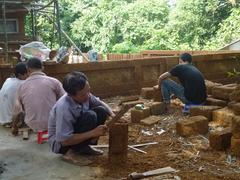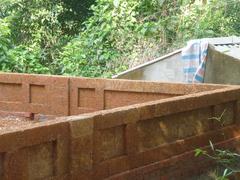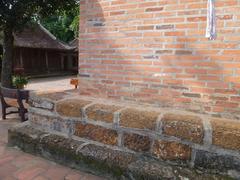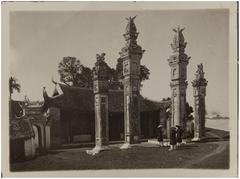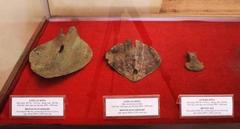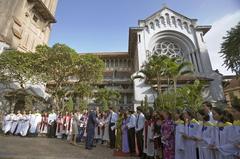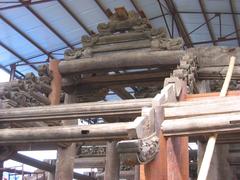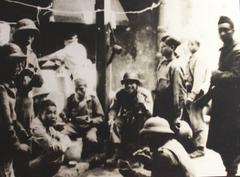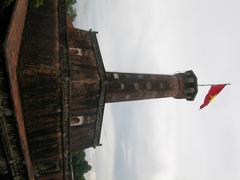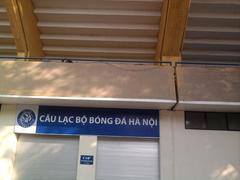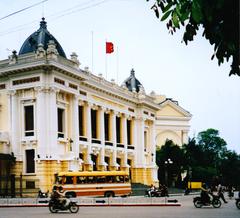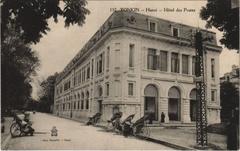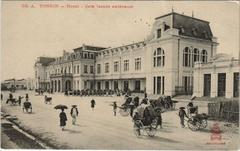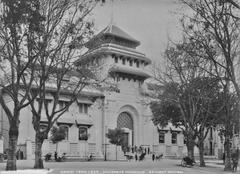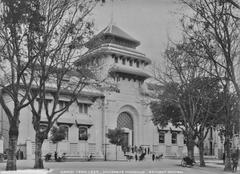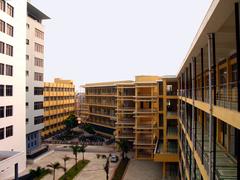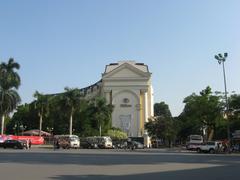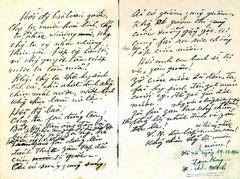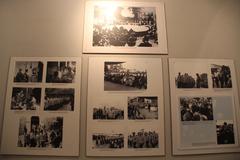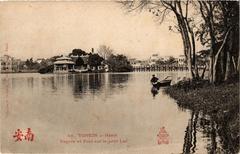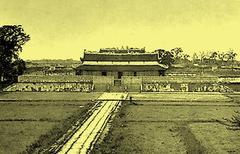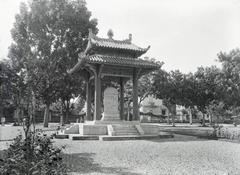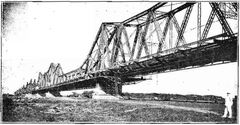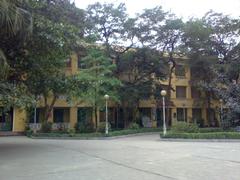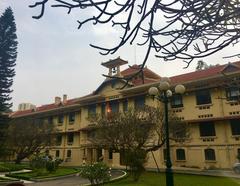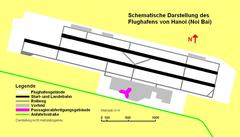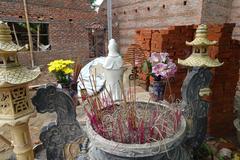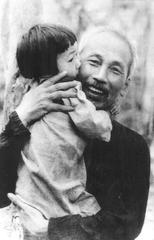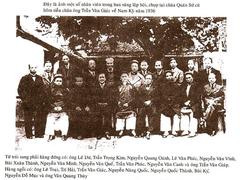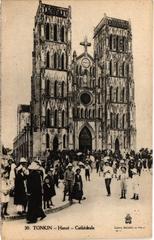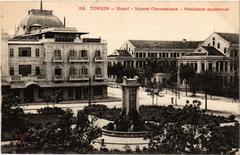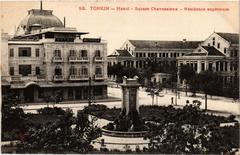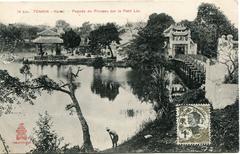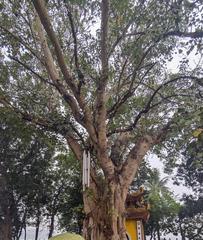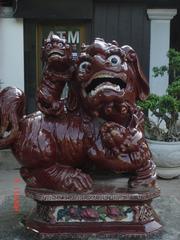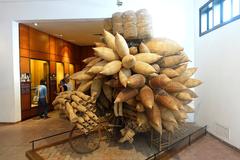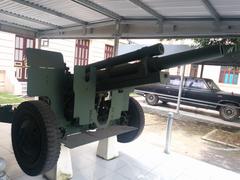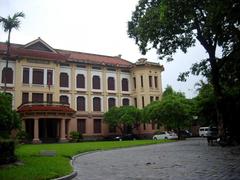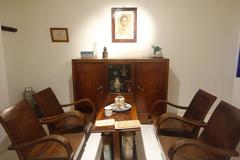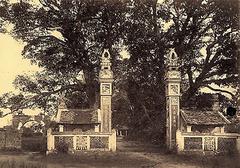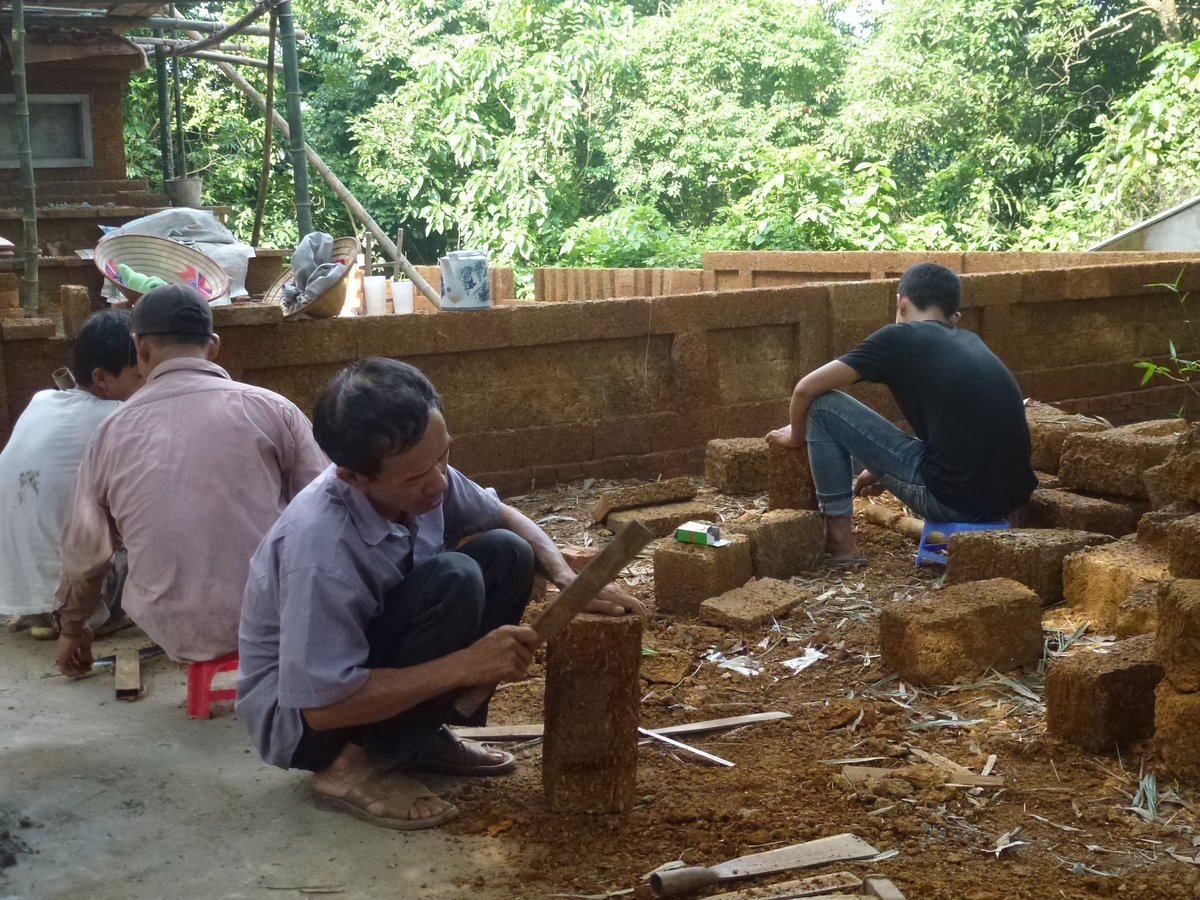
Chùa Tây Phương Visiting Hours, Tickets, and Hanoi Historical Sites Guide
Date: 14/06/2025
Introduction: Discovering Chùa Tây Phương
Chùa Tây Phương, also known as Sùng Phúc tự, is a historic Buddhist temple perched atop Câu Lậu Hill in Thạch Xá commune, Thạch Thất district, roughly 40 kilometers northwest of Hanoi’s city center. Revered for its spiritual ambiance, masterful architecture, and centuries-old wooden sculptures, Chùa Tây Phương stands as a cultural and religious landmark, making it an essential destination for those exploring Hanoi’s historical sites. Established as early as the 8th century, it is considered Vietnam’s second oldest pagoda after Dâu Pagoda and has been recognized as a National Special Heritage Site (Vietnam News; Thạch Thất District Portal).
Historical Overview
Origins and Evolution
Founded in the 8th century during the period of Tang dynasty influence, Chùa Tây Phương represents the enduring presence of Buddhism in northern Vietnam. Over the centuries, the temple has been restored and expanded, most notably in 1632 and during a major reconstruction in 1794 under the Tây Sơn regime. This last renovation introduced the iconic “chữ Tam” (three parallel halls) layout, integrating Buddhist symbolism with Vietnamese architectural traditions (Vietnam Explorer).
Artistic and Cultural Legacy
The pagoda houses more than 70 wooden statues, including the celebrated 18 Arhats and the thousand-eyed, thousand-armed Guanyin, all carved by artisans from the Chàng Sơn woodcarving village. These sculptures, many recognized as National Treasures, display a unique blend of Buddhist, Confucian, and indigenous iconography, reflecting the region’s diverse spiritual history (Vietnam Plus; Người Hà Nội).
Community and Festivals
Serving as a spiritual and cultural hub for the Đoài region, Chùa Tây Phương hosts an annual spring festival during the third lunar month, featuring traditional Buddhist ceremonies, folk games, and community gatherings (Baophapluat.vn; Phật tử Việt Nam). The festival is a vibrant expression of local heritage and religious devotion.
Architectural Highlights
Setting and Approach
Located atop Câu Lậu Hill, Chùa Tây Phương is accessed by ascending 237–247 laterite (ong stone) steps, shaded by ancient trees. This ascent symbolizes the spiritual journey toward enlightenment and offers panoramic views of the surrounding countryside (Người Hà Nội; Baotanglichsu.vn).
Layout and Architecture
The pagoda complex follows the “chữ Tam” design—three parallel main halls (Chùa Hạ, Chùa Trung, Chùa Thượng)—connected by a gently sloping stone path. The architecture features unplastered Bát Tràng brick walls, wooden columns on stone bases, and double-tiered, upturned roofs adorned with intricate dragon, phoenix, and lotus motifs. Interior spaces are defined by rhythmic wooden beams and circular windows, creating a serene, meditative atmosphere (Vi.wikipedia.org; Disantrangan.vn).
Artistic Masterpieces
Chùa Tây Phương is renowned for its expressive wooden sculptures. Highlights include:
- 18 Arhats: Each statue depicts a distinct personality and spiritual state.
- Tam Thế Phật and Di Đà Tam Tôn: Representations of the past, present, and future Buddhas.
- Guanyin with a thousand eyes and hands: Symbolizing compassion and omnipresence.
- Tuyết Sơn Buddha: A rare ascetic figure, showcasing the diversity of Buddhist iconography (Blog.mytour.vn; Baotanglichsu.vn).
Practical Visitor Information
Visiting Hours and Admission
- Opening Hours: Daily from 7:00 AM to 5:00 PM (Vietnam News).
- Entrance Fee: Admission is generally free, but some sources report a nominal fee (10,000–20,000 VND) to support preservation. Free entry is often granted on special occasions such as Vietnam Cultural Heritage Day and during the first three days of Lunar New Year (Tophanoiaz.com).
Getting There
- Private Car/Taxi: 60–90 minutes from Hanoi’s Old Quarter, ideal for flexibility and comfort.
- Motorbike: Suitable for experienced riders; offers scenic countryside views.
- Bus: Routes 02 and 89 from central Hanoi reach Chàng Sơn Industrial Zone, about 2 km from the pagoda; from there, take a motorbike taxi or walk (Local Vietnam).
Accessibility and Facilities
- Stair Climb: Be prepared for a 237–247 step ascent; the site is not wheelchair accessible.
- Facilities: Basic restrooms, drink/snack stalls, and souvenir stands are available at the entrance.
- Dining and Accommodation: Local eateries and guesthouses can be found within a short drive.
Dress Code and Visitor Etiquette
- Dress modestly (cover shoulders and knees).
- Remove shoes before entering prayer halls.
- Maintain a respectful demeanor; avoid loud noises and inappropriate behavior.
- Photography is permitted in general areas—ask permission for photos inside halls or during ceremonies.
Guided Tours and Photography
- Local guides are available at the entrance and through Hanoi travel operators.
- For groups, booking a guide in advance is recommended.
- Morning or late afternoon visits yield the best lighting for photography.
Festival Highlights
- Tây Phương Pagoda Festival: Held on the 6th–10th days of the third lunar month, featuring Buddhist rituals, folk games, water puppetry, and community celebrations (Baophapluat.vn).
- Moc Duc (Bathing the Buddha): Symbolic purification ceremony.
- Traditional Games: Tug-of-war, wrestling, human chess, and market fairs.
Nearby Attractions
- Chùa Thầy (Thầy Pagoda): Famous for its cave and water puppet shows.
- Chùa Trăm Gian (Hundred Compartment Pagoda): Renowned for architecture and Buddhist relics.
- Craft Villages: Chàng Sơn (fans), Phú Vinh (bamboo/rattan), Hữu Bằng (woodwork), and others offer unique souvenirs and cultural experiences (Dulich Tedviet).
Best Time to Visit
- Weather: February–April and October–December feature cooler, drier weather.
- Festivals: Plan your visit during the annual festival or outside peak hours for a more tranquil experience.
Frequently Asked Questions (FAQ)
Q1: What are the opening hours of Chùa Tây Phương?
A1: The pagoda is open daily from 7:00 AM to 5:00 PM.
Q2: Is there an entrance fee for Chùa Tây Phương?
A2: Entry is generally free, with a nominal fee (10,000–20,000 VND) reported in some cases; free during festivals or special days.
Q3: How difficult is the climb?
A3: The climb involves 237–247 steps; moderate fitness is recommended.
Q4: Are guided tours available?
A4: Yes, local guides and travel agencies offer informative tours.
Q5: Are there facilities for people with mobility issues?
A5: Accessibility is limited due to steps and uneven terrain.
Q6: Can I take photographs inside the pagoda?
A6: Photography is allowed in most areas; ask permission in prayer halls or during rituals.
Visual and Media Suggestions
Enhance your visit with photos of the pagoda’s architecture, the ong stone steps, festival scenes, and craft villages. Use descriptive alt tags such as “Chùa Tây Phương visiting hours,” “Chùa Tây Phương tickets,” and “Hanoi historical sites” for SEO and accessibility.
Summary and Visitor Tips
Chùa Tây Phương exemplifies the harmonious blend of Vietnam’s spiritual traditions, artistic achievement, and community life. Its timeless architecture and expressive wooden sculptures provide a window into centuries of Buddhist devotion and local craftsmanship. The serene hilltop setting, vibrant festivals, and proximity to craft villages make it a rewarding destination for cultural travelers. Plan your visit during the cooler months or festival season for the best experience, and consider joining a guided tour for deeper insight. For up-to-date information on visiting hours, festivals, and travel tips, consult official tourism portals or download the Audiala app.
Sources and Official Links
- Ancient pagoda recognised as national tourist attraction, 2023, Vietnam News (Vietnam News)
- Chùa Tây Phương - di tích quốc gia đặc biệt phần 1: Tên gọi, địa điểm, lịch sử, và phân loại di tích, 2023, Thạch Thất District Portal (Thạch Thất District Portal)
- Chùa Tây Phương - Huyện Thạch Thất, Hà Nội, 2023, Người Hà Nội (Người Hà Nội)
- Tây Phương Pagoda, Vietnam Explorer (Vietnam Explorer)
- Phát huy giá trị văn hóa lịch sử của di tích quốc gia đặc biệt Chùa Tây Phương, 2023, Vietnam Plus (Vietnam Plus)
- Lễ hội truyền thống Chùa Tây Phương là di sản văn hóa phi vật thể quốc gia, 2023, Hà Nội Mới (Hà Nội Mới)
- Lễ hội Chùa Tây Phương chính thức có tên trong danh sách di sản văn hóa phi vật thể quốc gia, 2023, Báo Pháp luật (Baophapluat.vn)
- Vẻ đẹp Chùa Tây Phương, 2023, Phật tử Việt Nam (Phật tử Việt Nam)
- Chùa Tây Phương: Bảo tàng tượng Phật độc đáo, 2023, Bảo tàng Lịch sử Việt Nam (Baotanglichsu.vn)
- Chùa Tây Phương, di tích quốc gia đặc biệt của thủ đô Hà Nội, 2023, Thế giới di sản (Thế giới di sản)
- Tour Hà Nội - Chùa Thầy - Chùa Tây Phương - Chùa Mía - Đền Và, 2023, Du lịch Tedviet (Dulich Tedviet)
